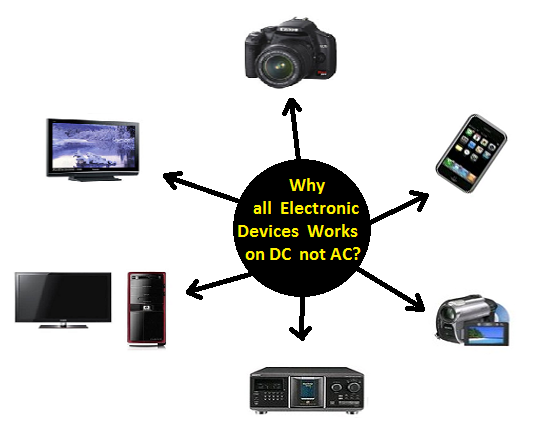Electronic devices are made up of active and passive electrical elements like vacuum tubes, transistors, diodes and integrated circuits. They also rely on magnetic fields and signals to communicate.
Some electron devices change a current’s behavior to produce or interpret signals that represent sounds, pictures, numbers, letters, computer instructions and other information.
Photoelectric Devices
Photoelectric devices are used to convert visible, infrared and ultraviolet light into electrical signals. They are used in a wide range of applications such as sensors, switch control, signal-decoding circuits, counter circuits and the like. They typically have a light emitter/photoreceiver combination that outputs a control signal (triac, SCR, NPN current sink transistor or PNP current source transistor) to cut off or switch on load currents.
Photoconductive cells (also called photoresistors) contain a thin film of certain semiconductor materials, such as lead or calcium sulfides and tellurides. These materials are poor electrical-current conductors, but when light is directed on them, they are able to generate an electric voltage from the photoabsorption of photoelectrons (negative electrons and positively charged holes) at their PN junction.
The light-induced flow of electrons and holes is referred to as the photovoltaic effect, and it is an important part of condensed matter physics, solid state physics and quantum chemistry. It is the source of energy generation in solar cells, and it also has many other uses. Researchers have recently developed a device that combines the photovoltaic effect with charge storage, so it could be used as a memory or for power-efficient lighting. The device captures the kinetic energy of light quanta and converts it into electricity, which is then stored in a battery for later use.
Electron Tubes
A sealed glass tube filled with either a vacuum or a gas, in which electrons move from a negatively charged electrode (the cathode) to a positively charged one (the anode). Other electrodes within the tube can vary electric and magnetic fields, thus changing the strength and direction of the moving electrons. Electron tubes are used to amplify signals and to rectify AC currents, among other things. They were the foundation of virtually all electronics devices from the early 1900s until after World War II when transistor technology became perfected.
Today, solid-state devices do most of the jobs that tubes once did, but they are still used for high-powered RF amplifiers, radio and TV broadcasting, microwave ovens, satellite communications, particle accelerators, radar and electromagnetic weapons. They are also used in audiophile amplifiers and some other low-power applications, such as X-ray machines.
There are many kinds of electron tubes, ranging from the simple triode and pentode that most people know about to the much more complicated travel-wave tube or klystron that is used in radar systems. The latter is a special case, in that it has four electron elements inside it (not three, as would be expected from the name). They are known by other names too: helix TWT and coupled-cavity klystron. A helix TWT is notable in that it does not use a RF cavity; this allows it to operate at a higher frequency, thereby avoiding the limitations associated with cavities.
Magnetism
Magnetism is the phenomenon of magnetic forces which occur when certain materials (usually ones that contain iron) are exposed to electromagnetic fields. It is one of the four fundamental forces in nature and can be induced by any electric current in a conductor, as well as the motion of elementary particles such as electrons.
Magnets are used in many different ways depending on their type. Permanent magnets have an iron core that is always attracted to a magnetic field. Electromagnets, on the other hand, are temporary magnets that work under the influence of applied electric current. They can be found in devices like motors and generators, etc. Neodymium magnets, which are a special type of permanent magnet, are especially important in modern technology because they can produce very strong magnetic forces for a relatively small volume of material.
Some examples of the use of magnets in modern technology include the magnets that help to separate metallic pieces in filtering machines, the magnetic heads on cranes to pick up cars and scrap metal, and the MRI machines that let doctors see the bones, organs and tissues inside our bodies without surgery. We also rely on electromagnets to store data in the hard drives of computers and our mobile phones, as well as to turn electricity into movement in electric motors.
Signals
Electronics is the study of electrons and their movement under the influence of an electric field. It was separated from electricity late in the 19th century with the identification of the electron by English physicist Sir Joseph John Thomson and measurement of its electric charge by American physicist Robert A. Millikan.
Electronic devices can convert alternating current into direct current for use in electrical appliances like fans, lights and heaters. They can also manipulate information using electronic components like diodes, transistors and microprocessors to perform a task. These components are the building blocks of a circuit.
A physical variable like sound, light, temperature or position can be converted to an electronic signal by a transducer. This signal then conveys information when it is plotted on a voltage-time graph. This type of information is called analog data.
However, information is more easily conveyed as digital signals. This data is recorded as one or zero on a computer system. Using this, it is possible to transmit and record audio, video and text simultaneously over long distances.
As the demand for more compact equipment increased, scientists and engineers began developing electronic devices that are 1,000 times smaller than conventional circuits. This was the start of microelectronics, which eventually led to the development of integrated circuits. This technology has allowed for smaller and faster electronic equipment to be developed. It has also enabled medical equipment like MRI, CAT and X-ray machines to be used as well as tests for diabetes, cholesterol and heart rate. It has even made it possible to talk to someone thousands of miles away by using electronic devices.






More Stories
5G Availability: Phones and Providers Currently Offering the Network
Job Opportunities in the Electrical Engineering Field
Why Window Corrupted Again and Again?